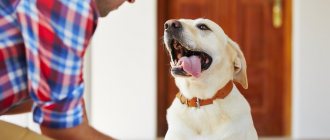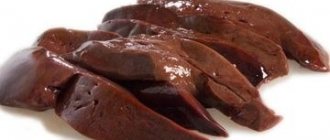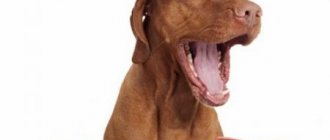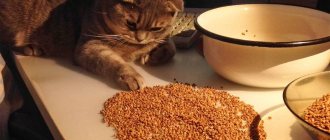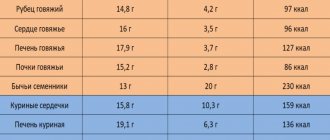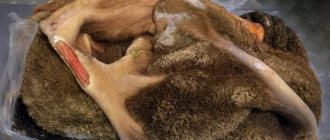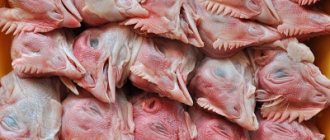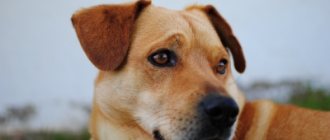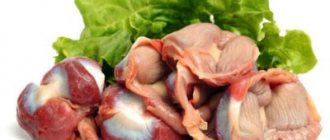The presence of animal fats in a dog's diet is very important. The source of essential fats is meat.
But often animal proteins provoke allergies in a pet. How to get out of this circle that seems closed?
To protect your pet from allergic reactions, it is recommended to feed the animal lamb.
Can dogs eat lamb?
Lamb is suitable for dogs of all sizes and breeds. Veterinarians recommend constantly using it for large animals that are bred for guard or herding purposes.
It is better to use lamb, that is, young meat . It saturates the pet’s body, which spends a large amount of energy every day.
For example, this will be an excellent addition to the basic diet of shepherd dogs.
It is recommended to use sheep meat for dogs with allergies. It has hypoallergenic properties and does not cause individual intolerance. Both the meat itself and offal are used to diversify the diet.
Benefit
Lamb contains the following substances:
- trace elements (iodine, iron, chromium, cobalt, copper);
- macroelements (calcium, sulfur, phosphorus, magnesium, chlorine);
- multivitamin composition (A, B, E, D).
It is recommended to use raw meat: it retains vitamins and minerals that are destroyed during heat treatment. To eliminate the risk of helminth infection, it is recommended to store the product in the freezer. In the morning it is scalded with boiling water, allowed to defrost, and then placed in the animal’s bowl.
Lamb is useful for pets who are weakened after illness or surgery, or in old age.
In what form is the product given?
Puppies from 1 month old with molars can eat raw meat, but in the form of minced meat or chopped.
Products pre-treated with boiling water are given separately. They are ground, added to porridge, supplemented with vegetables and dairy products. This allows you to raise a healthy pet with strong teeth.
It is recommended to choose the largest bones so that they do not get stuck in your pet’s esophagus.
Large breeds and adult animals can eat lamb raw, in a whole piece, together with offal. If veins and cartilage are present, there is no need to remove them. An adult animal is capable of chewing even the toughest cartilage and bones.
They buy or make their own dried offal and meat from lamb. They are not given daily, but only for encouragement.
The delicacy will not cause harm to health if consumed in limited quantities. If your pet regularly eats dried foods, the daily caloric content of food increases.
Content
1. Chemical composition 2. Advantages of lamb 3. Prohibitions 4. How to give it 5. Can dogs eat lamb in the form of by-products 6. Bones 7. Fat 8. Daily requirement
Mutton is the meat of an adult ram or sheep, brick-red in color, with a characteristic odor and white fat. Beginning dog breeders ask whether dogs can eat lamb, because four-legged pets require a variety of meats. It turns out that it is possible - the product is useful, but still there are different opinions on this matter.
Lamb diet per day
Meat products make up no more than 30% of the total diet.
Protein counting occurs depending on the activity of the animal:
with a sedentary lifestyle, the daily requirement of protein products is 30 g for every 1 kg of body weight;- with an active lifestyle (herding, working, service breeds), the volume of such products increases to 40-50g per 1 kg of live weight.
The table with the daily volume of lamb meat shows the dependence of the amount of this feed on certain factors.
| Dog size | Puppy | Adult | Elderly individual |
| Up to 10 kg | Up to 100 g | Up to 200 g | 100-200 g |
| From 10 to 20 kg | 150-300 g | 250-500 g | 400-500 g |
| From 20 kg and above | 350-700 g | 600 g-1 kg | 800g-1kg |
If the dog is after surgery, has a long illness, or is older than 8 years, the volume of proteins is increased. They are needed to replenish energy and strengthen the body.
Features of consumption
Lamb is suitable for absolutely all dogs. An active animal requires 40 g of protein food per 1 kg of weight per day; sedentary dogs need half that amount.
Features that are recommended to be taken into account when feeding an animal with lamb:
Lamb is a unique and healthy meat. But in order to protect your pet from eating disorders, it is recommended to buy food from a reliable place that has undergone veterinary control.
All dogs are different. If a new product is introduced into the diet, you should carefully monitor the animal’s well-being. The first signs of poisoning in a dog’s body may appear only after a few days. If you have unclear symptoms or signs of food poisoning, you should immediately contact a veterinary clinic to provide emergency care to your pet.
Source
By-products
Some owners want to save on food for their pet and give the animal not muscle tissue, but sheep offal.
For example, hearts, ventricles, lungs, kidneys, liver, trachea. The cost of such food is much lower, but the composition is richer.
Legs of lamb
Veterinary pharmacies and large stores sell treats for dogs - legs of lamb. This is a treat for your pet, but not constant food.
With periodic use, the following effects are formed:
- eliminating plaque, improving the quality of gums;
- normalization of digestion and intestinal motility.
If the dog chews furniture, wallpaper, shoes, it is recommended to give him a leg of lamb: it distracts the dog from the desire to chew foreign objects. The treat is suitable for adult animals.
Hooves
This part of the leg has no nutritional value. It is included in a dog’s diet to obtain proteins so that the animal can chew it, distracting itself from foreign objects.
The hoof is given to pets who permanently live in enclosures.
Guts
The intestines are first cleaned and dried. The product is not used for nutrition, but for reward.
The benefit of such food lies in the content of enzymes from the microflora of the lower gastrointestinal tract, which stimulate the digestion process.
The composition includes vitamins, but in small quantities. With frequent use, tooth enamel is cleared of plaque, which prevents the formation of stones.
Liver
Liver is used for puppies and adult animals. The liver contains a large amount of vitamins that accelerate metabolism and improve the regeneration of damaged tissue.
Liver contains components that help cleanse the body of toxins and free radicals.
Expert opinion
Panteleeva Irina Petrovna
Breeder, 11 years experience.
Liver is a dietary product, so the dog does not develop allergies and has no negative effect on internal organs.
The liver contains a large amount of iron, which is necessary to enrich the blood. When it enters, additional red blood cells are created, therefore hypoxia (oxygen starvation) of the brain and other organs is eliminated.
The animal's body receives folic acid, which is useful when bearing offspring. It prevents neurological defects and diseases.
Bones
It is best to choose large lamb bones. It is not recommended to use tubular varieties, as the sharp edges formed during chewing damage the walls of the digestive tract.
Properly selected lamb bone improves the quality of teeth, prevents stone formation and periodontitis.
Bones contain calcium, potassium, phosphorus, and other minerals that are beneficial for the musculoskeletal system.
Ribs
It is recommended to add lamb ribs with leftover meat. If there is fatty tissue on them, it is completely removed. You should not cook ribs, as they impair the digestion process.
Bones gnawed by an animal should be removed before the dog chews them, otherwise the resulting fragments may injure the esophagus.
Stomachs
They contain vitamins, microelements, and minerals. If the dog is young, the product is pre-boiled.
For an adult, they are used raw and included in the diet as a complete dish. They include proteins that saturate the body.
Scar
Lamb tripe is the section of the digestive tract in which plants are digested. An enzyme is formed in the walls of the mucous membrane of the organ, which improves the digestion process.
The scar is pre-washed and frozen - this way the pet receives more useful minerals and trace elements. Before use, the product is completely defrosted and served raw.
Lung
These by-products are given to adult dogs. The lungs have a delicate consistency, a large amount of vitamins and microelements.
They are not used as a monocomponent food, because poorly digested due to the large amount of connective tissue. The offal is added to porridges, mixed with meat, vegetables, and offal.
Trachea
It is easy to chew and swallow. The edges of the trachea do not scratch the esophagus and other parts of the gastrointestinal tract. The nutritional content is low, so the trachea is given as a reward, and not as the main food.
The dog is distracted from gnawing on foreign objects by switching its attention to the treat. There are bones inside, so entertaining will take time. There are no tubular bones, the trachea is safe.
Fat
Lamb fat is a healthy product and is even used in cooking for people, but it is not advisable to give it to dogs, because the meat itself is not lean. It is recommended to cut off the fat that is located on the internal organs and exclude it from the diet.
However, there is a fat tail. It is found in some breeds of sheep in the tail area, in the form of a spherical fatty deposit. Fat tail contains nutrients and water, which helps artiodactyls survive in harsh mountainous areas. This product contains many amino acids that make dogs hardy. It also improves sperm quality, the appearance of skin and coat, and, like meat, is low in cholesterol.
Despite all the beneficial qualities, fat tail is fat, so it should not be abused. Sometimes it can be added in small quantities to porridges without exceeding the norm of animal fats.
Dry food with lamb
Lamb can be found in a variety of dry foods. It is not recommended to use cheap options, which place a greater burden on the digestive tract and contribute to the deposition of stones inside the kidneys.
It is better to use expensive food, for example, Acana, Royal Canin . In addition to natural lamb, they contain additional vitamins and minerals. The dog receives a set meal.
How to give lamb to a dog if he doesn't like it
If the animal does not tolerate the smell of this type of meat, add small portions to its favorite food.
For example, they use ready-made canned food, to which chopped pieces are mixed. Gradually increase the portion of lamb.
If the pet refuses food, it is replaced with other varieties. Beef without fat will do.
Owners are interested in whether it is possible to feed their pet meat parts from lamb. Veterinarians recommend using muscle tissue, lung, calculus (part of the trachea), hearts, and ventricles. The parts are used for daily diet.
Chemical composition
The nutritional value of meat depends on the category and part of the carcass. The age of the animal also plays a role - the older, the higher the calorie content of the muscle tissue. Lamb meat is the healthiest: it is more tender and less fatty.
It is best to judge the nutritional value and chemical composition of lamb in comparison with other types of meat.
| Meat | Calorie content (KCal) | Squirrels | Fats | Carbohydrates | Cholesterol |
| Mutton | 147 | 18,1 | 8,2 | 0,0 | 64 |
| Beef | 157 | 20 | 7,4 | 0,1 | 72,3 |
| Pork meat | 194 | 16,5 | 21,5 | 0,0 | 67 |
In fatty lamb, the fat content is almost 2 times higher.
Minerals and vitamins
| Meat | K | Ca | Mg | Na | Fe | Zn | P | A | E | D | D3 | B9 |
| Mutton | 290 | 6 | 27 | 61 | 1,8 | 3,9 | 195 | – | 0,2 | – | – | 23 |
| Beef | 330 | 12 | 19 | 62 | 2,1 | 5,1 | 205 | 2,0 | 0,2 | 0,1 | 0,1 | 5 |
| Pork | 373 | 7,0 | 26 | 48 | 0,5 | 1,6 | 226 | 1,0 | 0,1 | 0,4 | 0,4 | – |
Among these types of meat, lamb is the leader in the content of magnesium, which is necessary for strengthening bones, and vitamin B9 (folic acid), which is beneficial for the immune system and the cardiovascular system.
Among these types of meat, lamb is the leader in the content of magnesium, which is necessary for strengthening bones, and vitamin B9 (folic acid), which is beneficial for the immune system and the cardiovascular system.
